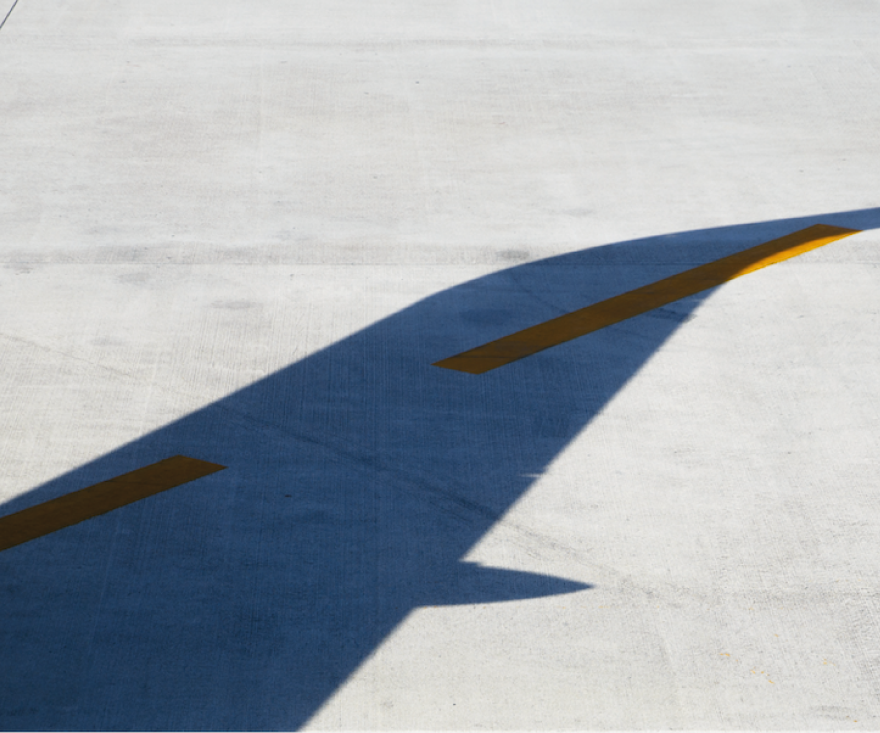Narrator
Welcome to the Velocity Podcast. In this episode, Jérôme Bouchard and Ken Aso discuss how it may take up to five years for the aerospace industry to recover from COVID-19.
Jérôme Bouchard
Hello and welcome to the Velocity Podcast. I'm Jérôme Bouchard, a Partner at Oliver Wyman, and I’m joined today by Ken Aso, also a Partner at Oliver Wyman. How are you, Ken?
Ken Aso
I’m doing very well. I’m excited to have a discussion with you today.
Jérôme
And I’m excited as well to compare our European and American points of view on the recovery of the aerospace industry.
Ken
Yes, COVID-19 has turned most industries upside down, and the aerospace industry that you and I follow most closely is no exception. The level of change and disruption is unprecedented, and it’s going to take many, many years to fully recover.
Jérôme
Yes, I agree. It could take up to five years. Can you remember back in January, when we were still talking about ramping up and delivering aircraft by the hundreds? That seems so far away now.
Ken
Absolutely. I remember talking about the next wave of technological advances, like all-electric aircraft and innovations in single-seat and unmanned aircraft. But now, those feel further away as we’re just trying to get planes full of passengers, with load factors of 10%, 15%, 20%, now 25% compared to a year ago.
Jérôme
Yes, and you're right. We've seen the situation improve slightly day by day, or week by week, but in April, we were at a very low point, with 85% to 90% of commercial capacity down. This is hopefully a once-in-a-lifetime event.
Ken
In past crises like 9/11, SARS, or MERS, we had economic tailwinds, like China’s growth or the rise of European low-cost carriers, to support recovery. Unfortunately, we don’t have those factors now in 2020.
Jérôme
No, this crisis is here to stay. It will also change how we travel. The time for long-haul vacations seems further away, and domestic flights will definitely restart first. Maybe there will be a glimpse of recovery this summer, but nothing significant before summer 2021.
Ken
That’s right. To recap some of the analysis we’ve been pulling together, air traffic has risen slightly from the low points in late March and April but is still largely at a standstill. The industry is in significant trouble, with over 900 air carriers operating globally, but that number could drop to around 600 in the next two or three years due to consolidation and closures. We started the year with around 28,000 aircraft in service, but now we have only about 12,700 to 12,800 aircraft operating – up from the trough of 7,800 but still far below where we were.
We typically retire between 5,000 and 7,800 airplanes annually, but we're expecting around 2,600 retirements over the next 12 months, including much younger aircraft. Planes as young as 10 to 20 years old are being pulled from service, creating an extraordinary buildup of inventory. This pandemic is triggering massive cuts in capacity and widespread changes across the supply chain.
Jérôme
Absolutely, and the first consequence is that airlines won’t place new orders for the next couple of years. We’re seeing a real drop in demand and a massive number of deferred or cancelled orders, particularly affecting Boeing. For 2020, we expect a roughly 50% decrease in aircraft production, with about 1,000 commercial planes delivered this year. While there may be a rebound in 2021 and 2022, aircraft manufacturing, especially for long-range wide-bodies, will remain significantly depressed. The demand for long-haul aircraft will stay low for at least the next couple of years. And, of course, the 737 MAX issue, which negatively impacted deliveries in 2019, remains unresolved.
Ken
Yes, it’s a significant issue for Boeing and its supply chain, which has been dealing with this since March 2019. Boeing recently communicated with Spirit to hold back on producing 737 MAX components, reducing from an original plan of 125 shipsets in 2020 to around 20. The volatility up and down Boeing’s supply chain has been severe, and this wreaks havoc on production planners trying to manage inventory, especially with liquidity risks.
Jérôme
One possible way to preserve the supply chain during these difficult times is through producing what we call “white tails” – aircraft that are manufactured without a specific airline buyer. Boeing or Airbus could manufacture these planes and park them at the end of the final assembly line until demand returns. This phenomenon is quite unusual, as the aerospace industry has always been focused on how many aircraft they can produce in a year. Now they have to manage the demand shock. This strategy won't last beyond 2021, as it’s a huge cash burden on aerospace manufacturers. But it may be necessary to maintain the industrial capacity needed to ramp up production again in 2022.
Ken
Yes, I’m reminded of the webinar Oliver Wyman hosted about six weeks ago, where we asked the 800 attendees whether white tails were a good idea. Most didn't think they should be produced because of the impact on the supply chain. However, this may become more common over the next year or two as OEMs try to recover.
Jérôme
That’s right, and Airbus is in a relatively stronger position entering the COVID crisis, with a large narrow-body fleet and a strong backlog. The A321XLR, in particular, seems to be a versatile platform that can bridge the gap between medium and long-haul operations. Boeing, on the other hand, faces more challenges, especially with the 737 MAX situation.
Narrator
The Velocity Podcast is brought to you by management consulting firm Oliver Wyman. We hope you have enjoyed the show. In the next episode, we will be joined again by Ken and Jérôme, as they continue the discussion around aerospace’s recovery from COVID-19. We invite you to subscribe so you'll be notified when the next episode goes live.
This transcript has been edited for clarity.



